Key Biscayne Homes
What would you like to know about Key Biscayne? For example, how about the history, things you can do there (Shopping, Dining, Outdoors, etc…). How good are the schools and what is commuting like if you work outside of the immediate community. It would be great to know about property value and in what direction real estate value is going. What is the tax rate and other associated costs to owning a property. Do I buy a new property or rehab an old one? Do I rent or own?
Here, you can discover quite a bit about Key Biscayne, Florida. What isn’t covered in these pages and up to the minute real estate information is just an email or phone call away. Also, there are links at the bottom and throughout the page to places mentioned and sites with more info.
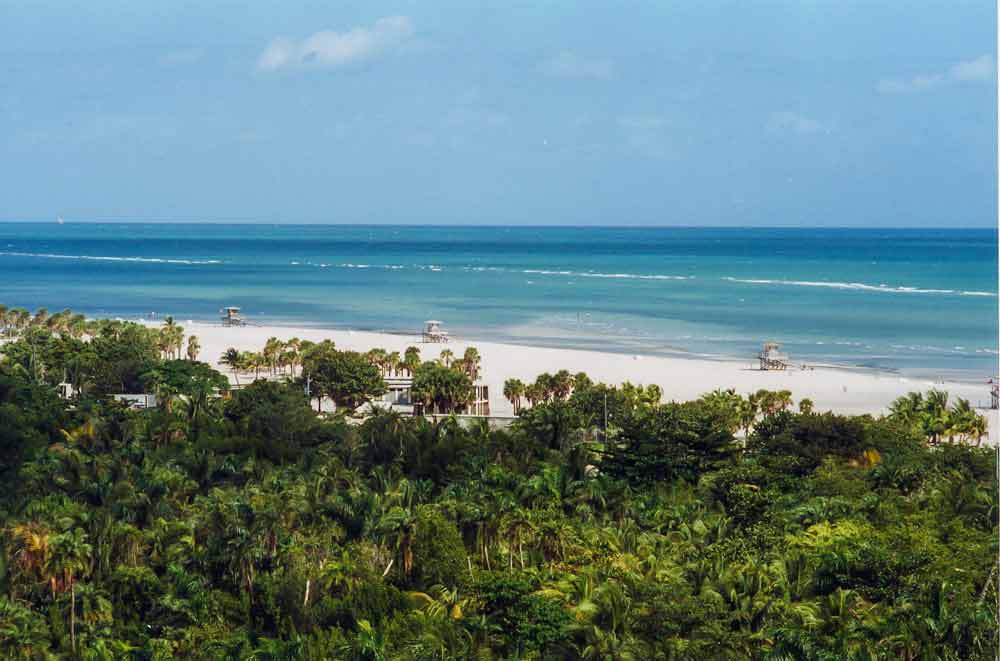
If you just want to do MLS real estate searches please Click HERE for Single Family Home Listings or HERE for Condo Listings. A little further down the page is a general condo and single family home mls search as well. These pages will update regularly and directly from the multiple listing service. Also, you will notice some of the real estate links have both sale and rental mls information for your convenience. Some great beach pictures will also be coming soon.
Below is the Name and Address of Every Condo on the Island.
Ocean Club
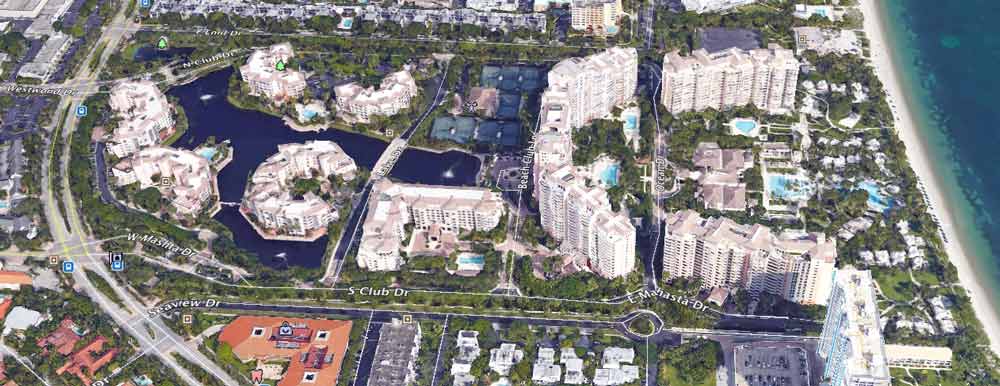
| Resort Villas One |
|
|
701,703,705,707 Crandon Boulevard |
| Resort Villa Two |
|
|
713,715,717,719 Crandon Boulevard |
| Lake Villa One |
|
|
721,723,725,727 Crandon Boulevard |
| Lake Villa Two |
|
|
731,733,735,737, Crandon Boulevard |
| Lake Villa Three |
|
|
739,741,743,745,747,749 Crandon Boulevard |
| Lake Tower |
|
|
765 Crandon Boulevard |
| Club Tower One |
|
|
789 Crandon Boulevard |
| Club Tower Two |
|
|
785 Crandon Boulevard |
| Club Tower Three |
|
|
781 Crandon Boulevard |
| Ocean Tower One |
|
|
799 Crandon Boulevard |
| Ocean Tower Two |
|
|
791 Crandon Boulevard |
Grand Bay
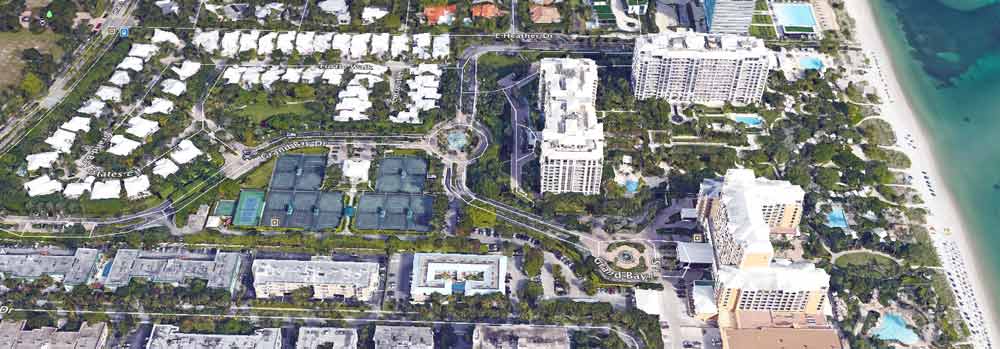
| Ritz Carlton Residences |
|
|
455 Grand Bay Drive |
| Grand Bay Residences |
|
|
445 Grand Bay Drive |
| Grand Bay Tower |
|
|
430 Grand Bay Drive |
Key Colony

| Key Colony I |
Ocean Sound |
|
201 Crandon Boulevard |
| Key Colony II |
Tidemark |
|
251 Crandon Boulevard |
| Key Colony III |
Emerald Bay |
|
151 Crandon Boulevard |
| Key Colony IV |
Botanica |
|
101,121,141,161,181, Crandon Boulevard |
Oceana Key Biscayne

Listings, Features and floorpans available by clicking ----> Oceana Key Biscayne
Commodore Club

| Commodore Club South |
|
|
199 Ocean Lane Drive |
| Commodore Club East |
|
|
177 Ocean Lane Drive |
| Commodore Club West |
|
|
155 Ocean Lane Drive |
Individual Buildings within Key Biscayne
| Towers of Key Biscayne |
|
|
111,1121 Crandon Boulevard |
| Bahia Mar |
|
|
650 Ocean Drive |
| Mar Azul |
|
|
600 Grapetree Drive |
| The Sands |
|
|
611 Ocean Drive |
| Casa del Mar |
|
|
881 Ocean Drive |
| Grapetree Townhouse Condo |
|
|
265,350,425,450 Grapetree Drive |
| Cape Florida Club |
|
|
210 Seaview Drive |
| Gardens of Key Biscaye |
|
|
111 to 237 East Enid Drive |
| Governors Lodge |
|
|
300 Sunrise Drive |
| Key Islander |
|
|
290 Sunrise Drive |
| Sunrise Manor Condo |
|
|
260 Sunrise Drive |
| Key Townhouse |
|
|
230 Sunrise Drive |
| Bahama House Condos |
|
|
200,201,202,204 Sunrise Drive |
| 150 Sunrise Drive Condo |
|
|
150 Sunrise Drive |
| Sunrise Drive Condo |
|
|
115 Sunrise Condo For Sale and Rent Contact Us 115 Sunrise Drive 155 Sunrise Drive Condo For Sale
155 Sunrise Drive Indies Condo For Sale and Rent
195 Sunrise Drive Cay Polynesia For Sale and Rent Contact Us 255 Sunrise Drive North Sunrise Inc. Condo For Sale and Rent
301 Sunrise Drive Ocean Drive Manors For Sale and Rent
590 Ocean Drive Galen Breakers For Sale Contact Us 550 Ocean Drive Blue Pelican For Sale and Rent
300 Galen Drive Solimar Condo of Key Biscayne For Sale and Rent
255 Galen Drive Galen 250 Condo For Sale and Rent Contact Us 250 Galen Drive Galen Drive Condo For Sale and Rent
240 Galen Drive Galen Drive West Condo For Sale and Rent
200 Galen Drive Key Biscayne Ambassador For Sale and Rent Contact Us 575 Crandon Boulevard Key Biscayne VI For Sale and Rent
201,251 Galen Drive Crandon Tower Condo For Sale and Rent
555 Crandon Boulevard Le Phare Key Biscayne Condo For Sale and Rent Contact Us 798 Crandon Boulevard Island House For Sale and Rent
200 Ocean Lane Drive Ocean Lane Plaza For Sale and Rent
170 Ocean Lane Drive Island Breakers For Sale and Rent Contact Us 150 Ocean Lane Drive Key Biscayne One Hundred For Sale and Rent
100 Ocean Lane Drive The Pyramids For Sale and Rent
50 Ocean Lane Drive The Palms of Key Biscayne For Sale and Rent Contact Us 77 Crandon Boulevard Villa Harbour Apartments Condo For Sale and Rent
166 Harbor Drive
General Info about Key Biscayne, Florida:

Key Biscayne is an island located in Miami-Dade County in the state of Florida within the United States. Key Biscayne sits between the Atlantic Ocean and Biscayne Bay and is the southernmost of the barrier islands along the Atlantic coast of Florida. Lying just south of Miami Beach and Fisher Island. It is connected to the city of Miami via the Rickenbacker Causeway. Originally built in 1947 as a drawbridge to accommodate sailing vessels the bridge was replaced and is now a fixed bridge to the mainland.
Key Biscayne is truly a unique island setting. The Village of Key Biscayne, which was incorporated in 1991, and was up to that time the first such incorporation in Miami-Dade County in fifty years, is nestled between Crandon Park of Miami-Dade County to the north and Bill Baggs Cape Florida State Park to the South. Immediately to the South of Bill Baggs is Biscayne National Park, one of two national parks in Miami-Dade County. Everglades National Park is the other on the Western Edge of Miami-Dade County.
Key Biscayne is actually not part of the Florida Keys but is a barrier island formed from eroded sand brought down over the millennia from Appalachian Mountain sand runoff that was carried by rivers to the ocean and then brought here by coastal water currents.

If one were to check the United States Census Bureau for the stats on the physical area of the Village of Key Biscayne they would find the following, not inclusive of the two parks surrounding the Village. The Village has a total area of 1.4 square miles (3.6 sq. kilometers) of that area the majority of it is made up of land (1.3 square miles) with just .1 square miles covered in water. The community itself is very diverse and is comprised of a little more than 10000 residents who call Key Biscayne home. Over the years Key Biscayne has been known to be a snowbirds paradise. During the months from begin November to end April you will find many families from the northeast United States and Midwest escaping the frigid cold to call Key Biscayne home. More recently, Key Biscayne has truly become a city of international recognition having residents from literally all over the world calling this Island Paradise home. How can you blame anyone? There are few places in the world where you can live on an island between two large and beautiful parks with world class beaches, fine dining, shopping, Tennis and Golf to rival any place in the world! “An affluent enclave where sandals and shorts are the norm.” The best part is that you have Miami and Brickell Avenue just minutes away and Miami International Airport just a few more minutes beyond that. “A resort lifestyle in a metropolitan setting.”

The overall island is five miles long (8 Kilometers) and depending on where you measure between 1 and 2 miles wide (1 to 3 Kilometers) tapering off at both the North and South sides of the island. The island has sandy beaches on the east side with mangroves and lagoons on the west or bayside.
Current Real Estate Available for sale and for lease.
Before reading on about the history, schools and other interesting facts about Key Biscayne, you might be curious to check out these quick links on what is currently available for sale and rent? At the top of the page is a comprehensive list (broken down by community and building) of what is available both for sale and for rent. Seasonal rentals should check the link in the table below. You can always email for an up to the moment list should you have something particular in mind.

History
Key Biscayne has always been an important part of this region from its earliest days. Focused attention on developing the island on a large scale didn’t happen until 1947 with the opening of the 4 mile long (6KM) Rickenbacker Causeway that went from Miami to Virginia Key and then crossed over to Key Biscayne. Up until that time almost two thirds of the island had been run as a coconut plantation, which at the time was the largest in the continental United States. This was the case through most of the first half of the twentieth century. Now that isn’t to say that people didn’t’ try developing the island as you will read going forward.
As a destination Key Biscayne has always been a sought after location to develop, live and play from its earliest days. As far back as 1568 there are references of coconuts from Spanish accounts. In 1830 it was recorded that mature coconut trees were on Cape Florida most likely received from Henry Perrine (another founding family of South Florida) and given to the first lighthouse keeper, John Dubose. Subsequently, in the late 1800’s (1880’s) two partners from New Jersey, Ezra Asher Osborn and Elnathan T. Field started to develop the Florida coast from Jupiter to Key Biscayne. They began clearing the natural vegetation (sadly, in the process clearing Indian Mounds and beach dunes) to plant coconuts. In Key Biscayne alone they had planted 76000 of their intended 300,000 coconut seeds brought from the Caribbean. Sadly for the two enterprising partners their plantings in Key Biscayne were, for the most part, eaten by rats and marsh rabbits. Still, for their efforts the at-the-time Florida Internal Improvement Fund allowed Osborn and Field to purchase Key Biscayne for 70 cents an acre.
But, they were not the only ones having or wanting a piece of Key Biscayne. Not lacking in intrigue the island had at that time more than one person vying for ownership. The first known settlers were from Europe. Pedro Fornells and his family were given a royal grant from Spain (after Spain regained Florida in 1783) for 175 acres on the southern end of Key Biscayne in the early 1800’s (1805). The Minorcan’s task was simple. He had to live with his family on the island and establish some kind of cultivation within six months time to retain his right to the land granted to him by Spain. They moved back to St. Augustine Florida leaving only a caretaker by the name of Vincent after that six month period.
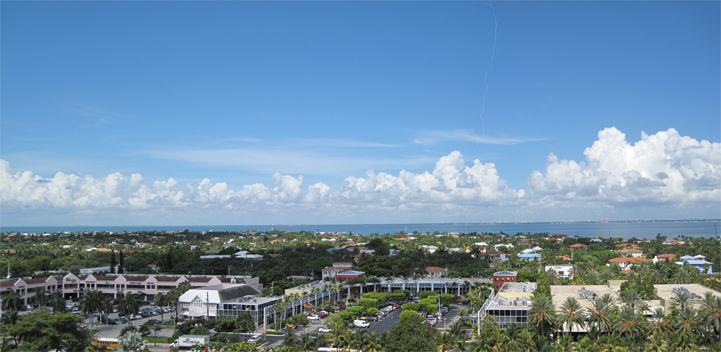
In 1821 Florida became a territory and one of the Fornell’s heirs sold their claim of Key Biscayne (for 100 dollars) to Mary Ann Channer Davis, who had just moved to St. Augustine in 1821 with her husband. Mary Ann’s husband was a Deputy US Marshal and very likely aware of plans to build a lighthouse along the Florida coast somewhere between where they were living (St. Augustine) and Key West knowing that Key Biscayne was the most likely location. The Davis’ eventually sold three acres (US 225 dollars in 1825) to the federal government to build what would become the Cape Florida lighthouse on the southern tip of Key Biscayne.
Not to be outdone and to make things interesting… Venancio Sanchez also of St. Augustine purchased a half share in Fornells grant from another surviving heir, who lived in Havana. Naturally, a feud between Sanchez and Davis erupted with both parties refusing to acknowledge the rights of the other. At the time, Davis had hoped to develop a town around the newly created lighthouse on the land they sold the government but between the feuding and the Seminole Indian war that was raging it was not to be. During the Second Seminole war (1836) the lighthouse was burned killing the assistant and severely wounding the keeper in charge. The lighthouse was not put back into service until 1847. In between 1836 and 1847 a military post was established in 1838 as well as a hospital to treat local maladies (dysentery, malaria, alcoholism…) and war wounds. Active pursuit of the Seminole Indians ended in 1842 though the main battle that was considered the turning point in the war took place in 1840 between Lt. Col. William S. Harney and Chief Chakaika which ended with Col. Harney chasing the Chief into the Everglades and killing him in his own camp.
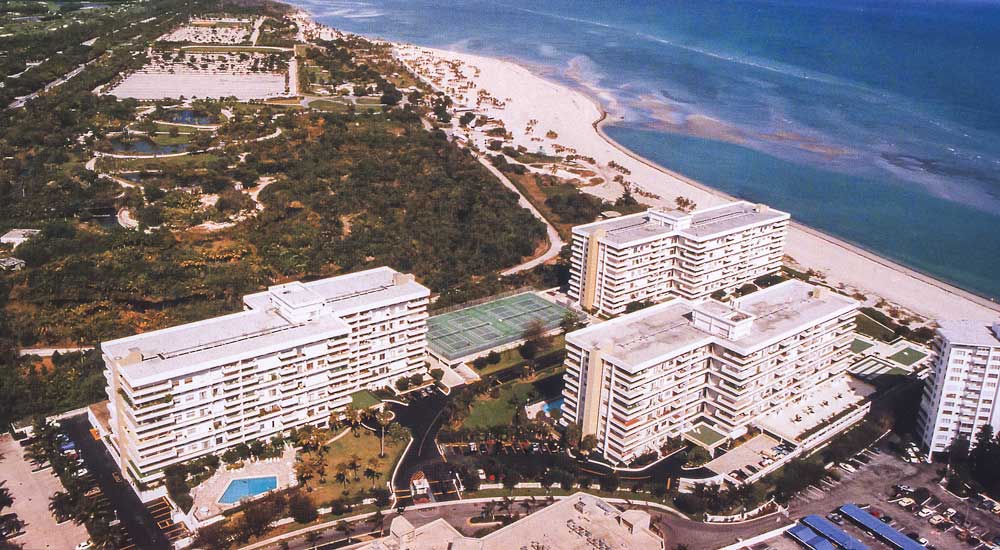
A post office was approved by the Postmaster General on Key Biscayne but never opened being that the person appointed to actually open the location never accomplished any of their assigned tasks…
While all this was going on the Davis’s plan of creating a community around the lighthouse did create a sale of two lots to Lt. Col. Harney for $1000. There were no further records of sales and as we already know the Davis’s plans were thwarted by war and title disputes. The Davis’s eventually moved to Texas where their oldest son Edmund Davis would eventually become governor.
In March of 1849 Key Biscayne was made a military reservation, which served as a base for the topographical engineers sent out to survey and map the surrounding areas of Key Biscayne, Biscayne Bay, The Florida Keys to Marquesas Key and the Florida Bay from the Keyes to Cape Sable. All of this work was a result of the high number of shipwrecks off of and along the coast of Florida’s Barrier reef.
You would think with the Davis’ out of the picture and the title and land disputes at an end that the Cape Florida Light House would get a break after being put back into service in 1847. Well, nothing spells trouble like war… In 1861 militants from the Confederate Army sabotaged the lighthouse so that it could not be used to guide Union sailors during Florida’s tenure as a member of the Confederacy. It went through one last repair in 1866 and was then replaced by the Fowey Rocks Lighthouse that sits 7 miles (11km) Southeast of where the Cape Florida lighthouse now stands.
The lighthouse served one last term as a beacon during the Spanish-American war in 1898 acting as a signal beacon (Beacon number 4) to provide early warning should the Spanish fleet approach.
After all the war, weather and disputes the lighthouse was leased to The Biscayne Bay Yacht Club for 20 cents per year to be used as its headquarters. Prior to moving their facilities to Coconut Grove (where it still exists to this day) the Yacht club was considered the tallest in the world and southernmost yacht club in the United States.
For five years of use the Yacht Club paid 1 dollar…
Beside all of the New World Discoveries and claims, the Tequesta Indians are considered the first known inhabitants of the Island some 1500 to 2000 years ago. After hurricane Andrew blew away much of the non-natural vegetation on Key Biscayne an archeological survey found what is considered one of the largest known Tequesta communities unearthed to date.
The Spaniards were the first to re-discover the island around 1513 and was claimed for the Spanish crown by Juan Ponce de Leon. Relations were established in 1565 (with the Tequesta Indians) and a mission was established in 1567 on the mainland across from Key Biscayne. It was abandoned 3 years later and another mission was not established until 1743 and then only lasted a few months.
As the story goes (related by Hernando de Escalante Fontaneda) Key Biscayne most likely got its name from a sailor called Viscayno who after being shipwrecked had lived on the lower east coast of Florida. During that time there was made a map that shows the “Cayo de Biscainhos”, which is considered by many to be the probable origin of the name Key Biscayne.
The Development Years
So now that we have run through a good part of the history or evolution of the island, what happened to the development of the island in the subsequent years beyond the war and these other issues?
If we go back to the Davis’s who moved to Texas, we find that Mary Ann passed away in 1885. To assert his families right or title to the land in Key Biscayne Waters Smith Davis (one of her sons) started purchasing the rights of other family members and eventually received a new deed in his name. There was one catch though. Venancio Sanchez STILL was claiming his half share of the Fornells Grant, plus there were the two lots that were sold to Col. Harney and don’t forget the two coconut entrepreneurs who had their deed from the Internal Improvement Fund…?! Davis was able to receive quit-claim deeds from the entrepreneurs and the Colonel but never was able to settle with Sanchez. The final act in this part of the land saga was in 1898 when Davis received a patent for the land which at the time (so everyone thought) cleared and removed all title impediments. A few years later in 1903 Davis bought the by then abandoned Cape Florida Lighthouse from the US Treasury for 400 dollars.
With all this behind him, Waters Davis started a small Pineapple plantation on the island eventually having a great variety of fruit trees. Davis built a large house for his own use on stilts so as not to get flooded from storm surges. Contrary to his parent’s original dream of developing Key Biscayne, Waters Davis preferred to treat the island as a family sanctuary rather than develop it. Of course, as we all know, you cannot keep a good thing secret for long… Henry Flagler eventually brought the Florida East Coast railway to Miami. As a result Flagler started dredging the Cape Florida Channel to deepen it for larger sea going cargo vessels that would connect with his newly established railway. Luckily for Davis a more direct route through what we now know as Government Cut was dredged along the southern end of Miami Beach and North of Fisher Island. This change brought back peace and quiet to Key Biscayne and allowed the waters around Key Biscayne to return to a natural or undisturbed state.
Now that Davis had his peace and quiet it was time for new players to emerge on the scene. In 1902 William Matheson visited Biscayne Bay by yacht. Having liked what he saw he built a winter home in Coconut Grove that overlooked the Bay. A few years later (1908) he started buying up land. In particular, he bought up all the land north of the Davis property. Eventually, he amassed 1700 acres that went all the way north to Bear Cut. Matheson created a coconut plantation on his new Key Biscayne lands that housed up to 60 persons including a school, dock, barn and windmill tied together by unpaved roads. At its height Matheson’s coconut plantation was considered the largest at the time in the US. Eventually (1933), the value for coconuts dropped precipitously and the plantation stopped shipping.
While all this was going on Waters Davis decided to sell his Property in 1913. Ralph Munroe (his property caretaker and who built and lived in The Barnacle in Coconut Grove) was appointed Broker for the sale. William Matheson bid on the property but the eventual buyer was James Deering (International Harvester Heir) who built the Vizcaya Mansion in Miami. Deering bought the property for 20,000 dollars and had designs to develop the property as a tropical resort. His Cape Florida property began being cleared to make way to for land sales and jetties were built on the east side to protect the beach sands from eroding. Davis who died one year after the sale to Deering did have one stipulation in the sale to Deering which was that he had to renovate the Cape Florida Lighthouse.
By complying with this request Deering opened up another can of legal worms. Deering contacted the US Government to get the specifications for the lighthouse. By doing so the government realized that a lighthouse had fallen into private hands…! Not only that, the island in general had been reserved by two executive orders as a military space. After a lot of legal work the US Congress and then President Woodrow Wilson agreed to recognize the rights of Deering and Matheson as rightful owners of their respective pieces of Key Biscayne.
The amazing part of this story is that now the heirs of the late Venancio Sanchez filed a lawsuit against Deering, claiming a half interest in his Cape Florida land (you got to appreciate their tenacity). Naturally, all work halted on his development and the ensuing legal battles began. After many varied legal battles, the Supreme Court of the United States finally decided the suit in 1926. Sadly though, Deerings victory was not to be celebrated by him as he had passed away the year before passing on the property to his heirs.
More Development Deals, a Land Boom and a Bust…

With another round of lawsuits and ownership battles resolved it was now Matheson’s turn to try his hand at developing what is now Crandon Park and the Northern half of what today is the Village of Key Biscayne. He entered into a deal with another Davis (of no relation to the Davis family previously mentioned). D.P. Davis was a land developer with an expertise in the reclamation of submerged lands into sellable home sites. During the 20’s land boom in Florida Davis was known for having created Davis Islands in Tampa and Davis Shores near St. Augustine.
1926 was a busy and one could say intense year by all accounts for Key Biscayne. The city of Coral Gables incorporated with Key Biscayne as a part of its boundaries. It had been hoped at the time that Key Biscayne would be to Coral Gables what Miami Beach had become for Miami. A beach front resort for the city. The Great Miami Hurrican of 1926 swept through the area and literally destroyed the islands structures and at the time coconut plantation. From here it was a series of tough events. The Matheson’s replanted their plantation in breakneck time. D.P. Davis never was able to meet his end of the bargain to develop homes and declared bankruptcy. The housing boom ended, coconut values plummeted and the dream of building a bridge tying Key Biscayne to the mainland would have to wait a little longer.
An interesting side note to this story is that the Matheson’s also paid the highest amount ever paid for an acre of land from a US government auction of 58,055 dollars for a total of just under 7 acres. It would be another 20 years before any major development happened again.
Land Donations that make Key Biscayne such an amazing place.

William Matheson passed away in 1930 leaving his property to his heirs. There was all sorts of ideas passed around in the late 30’s (1939) that included an airbase on the northern end of Key Biscayne and a proposal to develop Virginia Key.
When it was all said and done the family decided to donate 808 acres (327 +/- hectares) that came with over 3 miles of white sandy beach along the Atlantic Ocean to Dade County. The land was donated with the strict understanding that it be used as a park and was named after Charles Crandon who was the at the time commissioner who negotiated the deal. The structure of the deal that was worked out was that in exchange for the land the county would build a causeway to Key Biscayne.
The Causeway got started but with the bombing of Pearl Harbor it was put on a backburner as all effort and energies focused on the war effort.
With the north end of the Island donated to Dade County there was still the issue of what happened to the Cape Florida property (Deering estate on south side of island) and the rest of the Matheson land between these two large donated tracts.
Jose Manuel Aleman who had fled Cuba as a result of scandals during his tenure as education minister bought the Cape Florida property from the Deering Estate in 1948. He had originally intended to donate the lighthouse and about ten acres around it to the National Park Service but his offer was rejected.

In 1950 the County Planning Board presented a plan to put a road through Key Biscayne that would connect with the overseas highway. It was an ambitious project to say the least. Aleman wasted no time in preparing his property for this potential windfall a major road passing through his property. Aleman passed away in the following year and the grand plan of the County was set aside and not followed through on.
Aleman’s widow, Elena Santeiro Garcia took her late husbands property and added to it by buying up an ocean to bay strip that belonged to Matheson. Santeiro Garcia actually sold the property to prospective suitors three times! Each time excepting the last it reverted back to her name by some action of default of the prospective buyer. In the end it was Bill Baggs who was the Editor of the Miami News that started campaigning for all the property to be purchased and preserved as a park. The county had considered purchasing 50 acres but it was Bill Baggs efforts that brought this to the attention of US Secretary of the Interior Stewart Udall. In the end the state of Florida purchased the property with the assistance of the US government and was named in Bill Baggs honor. The park opened January 1 1967.
A Bridge is Built and Development Begins
With two major parks on both sides and the conclusion of the war Commissioner Crandon moved forward with the completion of the bridge. The bridge was named after Eddie Rickenbacker, a World War I flying ace and founder and President of Eastern Airlines.
With the Rickenbacker Causeway in place development of Key Biscayne started full speed. The remaining land between the two parks started being developed by the Mackle Construction Company. They offered new homes on the island for $9540 dollars and only $500 dollars down!
The US Post Office finally opened an office and the Key Biscayne Elementary School opened in 1952.
Hurricane Andrew (Before Picture of Cape Florida)

Hurricane Andrew (After Picture of Cape Florida)

At first considered a terrible devastation to the Cape Florida State Park, Hurricane Andrew became the great non natural vegetation eradicator doing for the community in a few hours what economically was unfeasible otherwise. Hurricane Andrew singularly is credited (among its not so good honors) for removing the Australian Pines from the area that were originally brought to the island over the years by such notables as Dr. Henry Perrine. The photos truly speak for themselves!
Notable Notables

During the Nixon presidency Richard Nixon used his residence in Key Biscayne that eventually was nicknamed the Florida White House as it was visited more than 50 times during his term as President and as a result the U.S. built a heliport on the water directly behind what was his compound at the time. It still stands to this day. There was good reason for Nixon to reside in Key Biscayne. Recommended to him by Florida Representative George Smathers, Smathers introduced him to who would become one of his closest friends and advisers Bebe Rebozo just about lived almost next door. Rebozo was the owner of Key Biscayne Bank and became known for having been indicted for laundering $100,000 dollars in donations from Howard Hughes to Nixons election campaign. Another close friend of Nixon’s Robert Abplanalp (invented the aerosol spray valve) was also a resident at the time of Key Biscayne and a close friend of Nixon.
Fast Forward to the Present
The next wave of development activity took place as a direct result of the replacement of the Rickenbacker causeway drawbridge with the current fixed bridge (The William Powell Bridge) put in use 1985 and in use today. This dramatically shortened commute times and increased desirability for this historically sought after location. The fact of the matter was that people were already visiting the new Seaquarium on Virginia Key as well as the former Planet Ocean (Now the MAST Academy) and the beaches. The original bridge as a result received quite a bit of usage and was showing serious signs of aging. The original bridge (with draw bridge removed) is still available as a fishing pier but has been closed recently for repairs.
Education in Key Biscayne
Key Biscayne is a very family oriented community and actively involved in its education system having some of the best public schools in the State of Florida. Currently, you have the Key Biscayne Elementary school which covers pre-kinder to eighth grade. High schools are either MAST academy which, is a magnet school program participant and geared toward maritime studies and engineering or Coral Gables Senior High. For Private schools you have a private schools (denominational and non as well) both on and off the island which comprise some of the most prestigious private schools in the country such as Ransom-Everglades, Columbus, Carrolton School for girls and a hand full of select preparatory academies.

Taxes in Key Biscayne
Key Biscayne incorporated in 1991 and as a result a portion of its collected tax revenues is returned to the City for direct use within the community. Key Biscayne consistently has one of the lowest millage rates in the county as a result of what is considered very good local fiscal management and a very high tax base in general within the community. The 2008 tax rate for Key Biscayne was just over 17.5 mills. Click HERE for a link to the Metropolitan Dade Counties 2008 adopted millage rates and see what they breakdown of those costs are.
Crime
Being situated on an Island between two parks with a toll bridge for access are substantial natural deterrents to crime and Key Biscayne has a very low incidence of crime as a result. The 2008 Metropolitan Dade County Crime Report shows Key Biscayne having NO murders, rapes or robberies last year and none to report so far this year. 4 assaults, 8 burglaries and 11 vehicles stolen. This is a 13 percent drop from the year before and the trend continues. Key Biscayne has it's own Police Department as well as it's own Fire Department. It is truly a safe community. Click HERE for a copy of Metropolitan Dade County 2007 Crime Report.

Living on the Island
Key Biscayne truly is Island Paradise. With a wide range of living possibilities, It is one of the few places in Metropolitan Miami where you feel like you left town and are on a resort when all you did is cross the bridge to go home! It’s a lifestyle that is agreeable to shorts, sandals, bicycles and casual living as it is to customized street legal golf carts and limousines. It has an international flavor with a touch more of a European flair than Miami to round outs it’s strong contingent of Latin American, Northern US and local transplants. You have great little boutique shops. Also, expect a very good variety of dining and excellent health services on the island.
For special events you have the 4th of July parade which in Key Biscayne is truly a community event. World Class Tennis and Gold Tournaments are almost walking distance if you up to it or a few minutes with a shuttle bus. The Key Biscayne Arts Festival is a nationally recognized arts event and always has interesting things to see.
Key Biscayne has two amazing parks on either side and a beautiful park that is part of the village along Crandon Boulevard that in the afternoons fills up with families, their children and nannies. You can watch little league soccer, baseball or just go fly a kite in the park. It is truly a focal point of the community as is the beach park for beach goers.
Riding a bike, walking, rollerblading, running or whatever outdoor activity you like is easy and safe to do in Key Biscayne being a very bicycle and pedestrian friendly community. Nothing is ever perfect but Key Biscayne tries it’s best and succeeds on a lot of levels because of good community involvement both in terms of local education and general civic activity of the island. It’s a small town feel with a big cities heart.
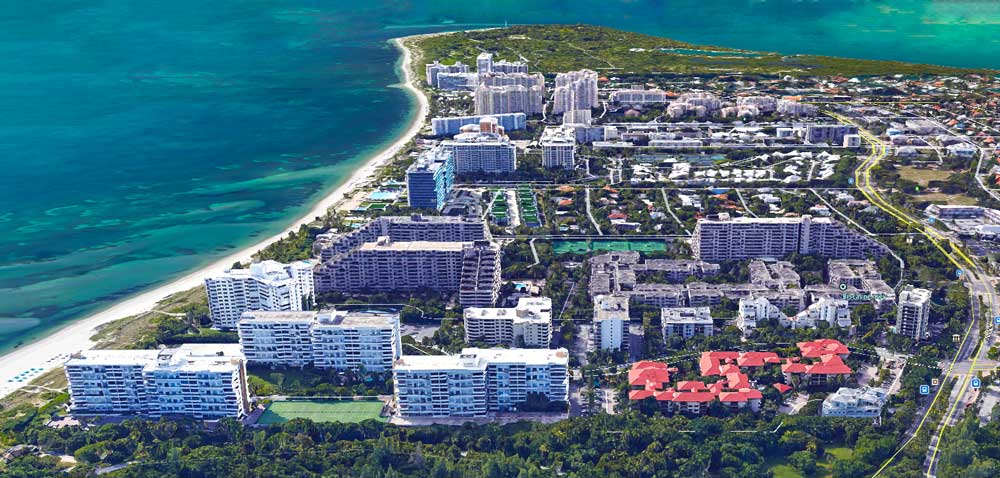
Current Real Estate Market (What is Availble).
Much like the tax and crime section, this area will be updated periodically with more current data as it is made available. The available real estate links are updated daily automatically and are directly tied to the Florida Multiple Listing Service for your convenience.
To provide a better understanding of the Island we’ll give you a little help with the community layout. The island is made up of Condominiums on the east side of the island (from Crandon Blvd. to the ocean) facing the Atlantic and either directly on the beach or steps away from it with beach access rights included in almost all cases. These apartments range in size from ground floor studios in low-rise condos with no views to multistoried Penthouse homes in the sky with terraces and views to the Ocean, Biscayne Bay and Downtown Miami. You will find most of the buildings to be excellently managed and normally with reserve funding in place. Special assessments do occur on occasion but this can always found out up front before committing to any property should it make a difference.
The other half of the island is made up of single-family homes that comprise all the land west of Crandon Boulevard to Biscayne Bay. These properties are comprised of three lot types. Interior lots with no canal or water access. Canal with ocean access (Boaters Paradise?) and lots directly on the water with views that vary from Cape Florida to Downtown Miami and everything in between. Lots can vary in size from a little less than 7500 sq. ft to over an acre. There are a few vacant or developer lots available. In many cases permitting and plans in place. Homes vary in size from original 2/1 carport homes of around 1000 sq. ft. (original Mackle Homes) to estate homes that would satisfy the most discerning of tastes.
Property values (not surprisingly) are high and relatively stable (even in these trying times), as it is effectively a no growth area in terms of land expansion. Along Crandon Boulevard you will find shopping, dining, gas, groceries, offices and boutiques. The places that have office space as a part of their commercial mix tend to have high occupancy rates as a lot of residents enjoy working within the islands laid back and discrete attitude just a few minutes from home.
Investment properties (as in all areas of the state) have taken a hit in value having to compete with the entire off island developer units (Downtown Miami, Brickell, Roads area) that are available. As this inventory of new unsold units gets absorbed the market for investment rentals will again stabilize. Key Biscayne being a beach resort community does benefit from seasonal rentals as well. The season runs from November to April (Winter Season).
Final Thought
We really hope you found this information and images useful! If Key Biscayne is a place that you think you might like to call home give us a call or send us an email. We can help you with buying, leasing, investing in residential homes or condominiums as well as commercial space should you need it.
Sincerely,
The EMH3 Team!





















